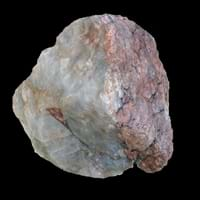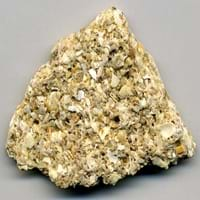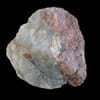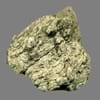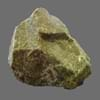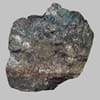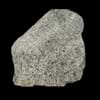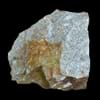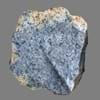Definition
Pegmatite rock is a holocrystalline, intrusive igneous rock which is composed of interlocking phaneritic crystals
Coquina is a sedimentary rock that is composed either wholly or almost entirely of the transported, abraded, and mechanically-sorted fragments of the shells of molluscs, trilobites, brachiopods, or other invertebrates
Origin
Unknown
European Foreland Basins
Discoverer
R. J. Hauy
Unknown
Etymology
From Greek pegma, pegmat which means- thing joined together + -ite
From Concha (Latin)+ Coquina(Spanish) +conch(English)= Couquina (mid 19th century)
Class
Igneous Rocks
Sedimentary Rocks
Sub-Class
Durable Rock, Hard Rock
Durable Rock, Soft Rock
Group
Plutonic
Not Applicable
Other Categories
Coarse Grained Rock, Opaque Rock
Coarse Grained Rock, Opaque Rock
Texture
Pegmatitic
Clastic
Color
Black, Brown, Cream, Green, Grey, Pink, Red, Rust, Silver, White, Yellow
Beige, Buff, Orange
Durability
Durable
Non-Durable
Appearance
Layered, Banded, Veined and Shiny
Layered, Banded, Veined and Shiny
Interior Uses
Decorative Aggregates, Flooring, Interior Decoration
Decorative Aggregates, Homes, Hotels, Interior Decoration
Exterior Uses
As Building Stone, As Facing Stone, Paving Stone
Garden Decoration, Office Buildings
Other Architectural Uses
Curbing
Curbing
Construction Industry
As Dimension Stone, Building houses or walls, Construction Aggregate, for Road Aggregate, Landscaping
Building houses or walls, Construction Aggregate
Medical Industry
Not Yet Used
Not Yet Used
Antiquity Uses
Artifacts, Sculpture, Small Figurines
Artifacts, Monuments, Sculpture, Small Figurines
Commercial Uses
Creating Artwork, Jewelry, Source of corundum, tourmalines, beryls and topaz
Creating Artwork
Types
Granite Pegmatite, Gabbro Pegmatite and Diorite Pegmatite
Not Available
Features
Generally rough to touch, Is one of the oldest rock, Source of corundum, tourmalines, beryls and topaz
Available in Lots of Colors and Patterns, Is one of the oldest rock
Archaeological Significance
Monuments
Not Yet Used
Used
Famous Monuments
Not Applicable
Data Not Available
Famous Sculptures
Data Not Available
Data Not Available
Pictographs
Not Used
Used
Petroglyphs
Not Used
Used
Formation
Pegmatite rock is holocrystalline, intrusive igneous rock which is formed by partial melting and dewatering during the process of metamorphism.
Coquina is a sedimentary rock which is formed when billions of small clam-like seashell, called Coquina, or cockleshell are die and hence are deposited, buried and turns into a rock when pressure is applied.
Mineral Content
Apatite, Beryl, Feldspar, Fluorite, Garnet, Lepidolite, Quartz, Silica, Spodumene, Topaz
Apatite, Augite, Bronzite, Calcite, Chert, Chlorite, Clay Minerals, Epidote, Feldspar, Garnet, Micas, Muscovite or Illite
Compound Content
Aluminium Oxide, CaO, Iron(III) Oxide, FeO, Potassium Oxide, Magnesium Carbonate, MgO, Phosphorus Pentoxide
CaO, Carbon Dioxide, Iron(III) Oxide, MgO
Types of Metamorphism
Burial Metamorphism, Cataclastic Metamorphism, Contact Metamorphism, Hydrothermal Metamorphism, Impact Metamorphism, Regional Metamorphism
Not Applicable
Types of Weathering
Biological Weathering, Chemical Weathering, Mechanical Weathering
Biological Weathering, Chemical Weathering, Mechanical Weathering
Types of Erosion
Chemical Erosion, Coastal Erosion, Glacier Erosion, Sea Erosion, Water Erosion, Wind Erosion
Coastal Erosion, Sea Erosion, Water Erosion, Wind Erosion
Grain Size
Medium to Coarse Grained
Coarse Grained
Fracture
Conchoidal
Irregular
Porosity
Less Porous
Highly Porous
Luster
Grainy, Pearly and Vitreous
Dull to Vitreous to Submetallic
Compressive Strength
Not Available
Cleavage
Perfect
Not Available
Toughness
2.1
Not Available
Specific Gravity
2.6-2.63
1.10-2.24
Transparency
Translucent to Opaque
Opaque
Density
2.6-2.65 g/cm3
2.8-2.9 g/cm3
Resistance
Heat Resistant, Impact Resistant, Pressure Resistant
Heat Resistant, Impact Resistant, Pressure Resistant, Wear Resistant
Deposits in Eastern Continents
Asia
China, India, Iran, Japan, Nepal, North Korea, Russia, Saudi Arabia, South Korea
Not Yet Found
Africa
South Africa
Not Yet Found
Europe
Austria, France, Greece, Ireland, Italy, Netherlands, Slovakia, Spain, Turkey, Ukraine
United Kingdom
Others
Not Yet Found
Not Yet Found
Deposits in Western Continents
South America
Brazil
Not Yet Found
Deposits in Oceania Continent
Australia
New South Wales, Queensland, South Australia, Western Australia
Not Yet Found
All about Pegmatite and Coquina Properties
Know all about Pegmatite and Coquina properties here. All properties of rocks are important as they define the type of rock and its application. Pegmatite belongs to Igneous Rocks while Coquina belongs to Sedimentary Rocks.Texture of Pegmatite is Pegmatitic whereas that of Coquina is Clastic. Pegmatite appears Layered, Banded, Veined and Shiny and Coquina appears Layered, Banded, Veined and Shiny. The luster of Pegmatite is grainy, pearly and vitreous while that of Coquina is dull to vitreous to submetallic. Pegmatite is available in black, brown, cream, green, grey, pink, red, rust, silver, white, yellow colors whereas Coquina is available in beige, buff, orange colors. The commercial uses of Pegmatite and Coquina are creating artwork, jewelry, source of corundum, tourmalines, beryls and topaz.
